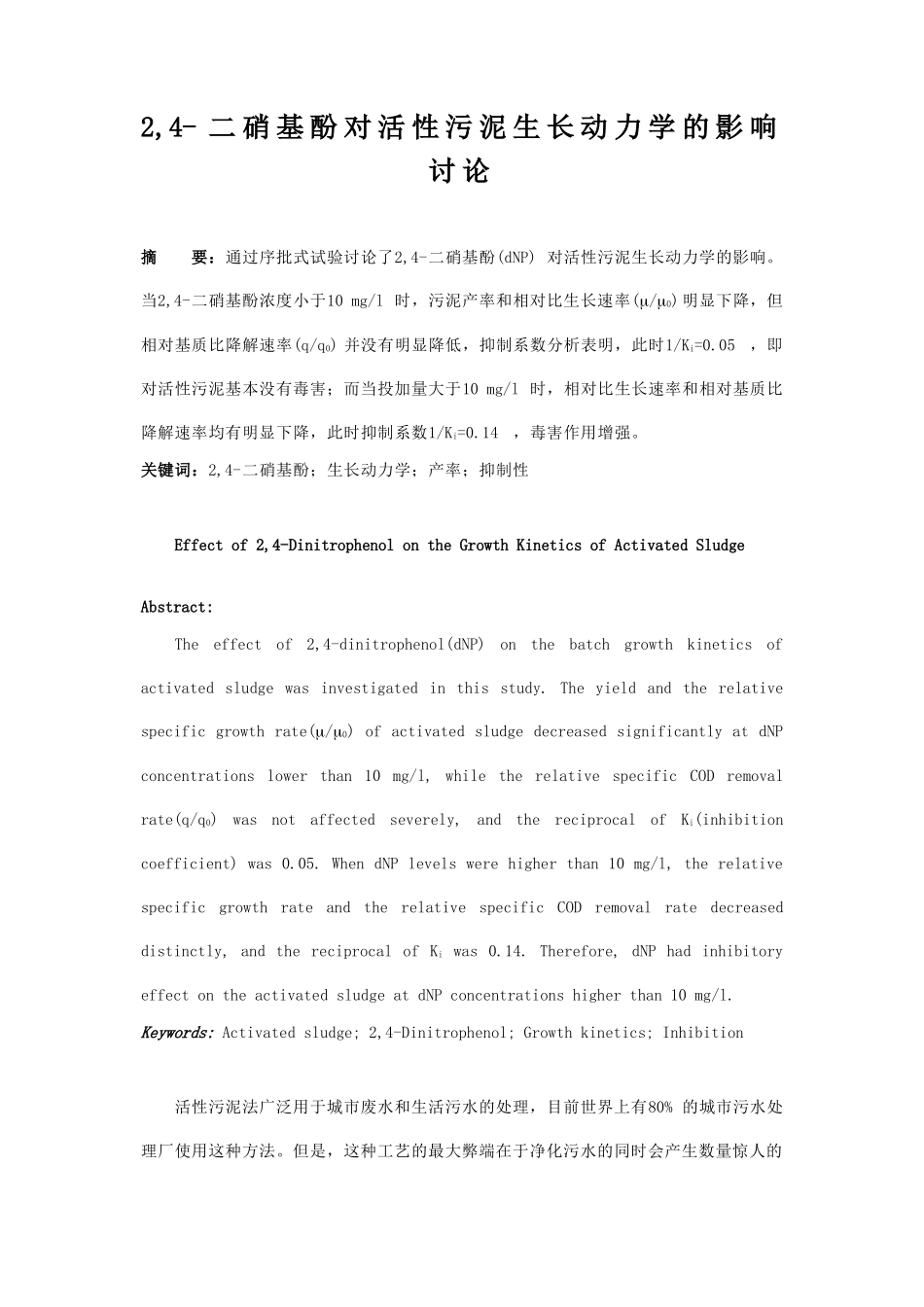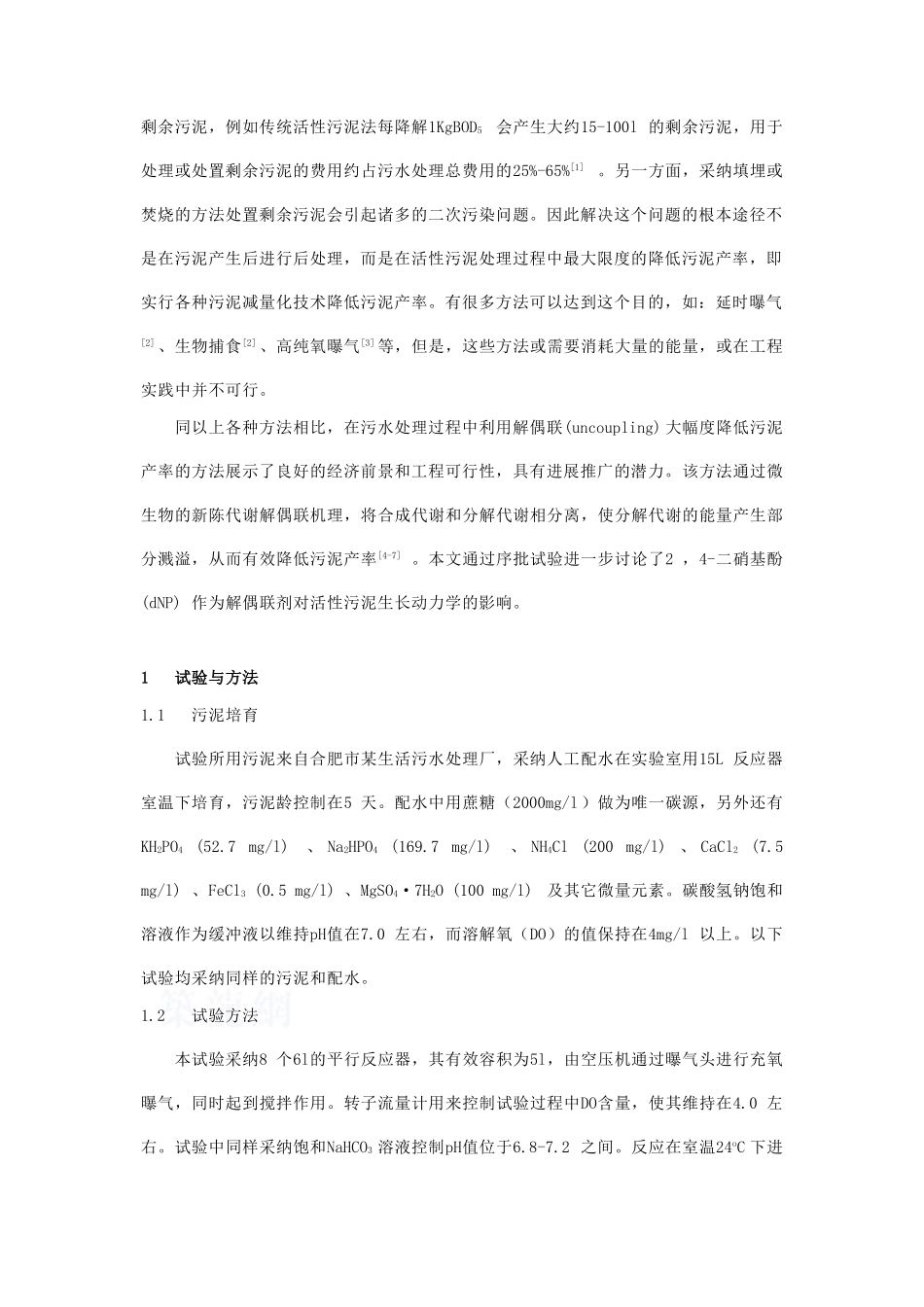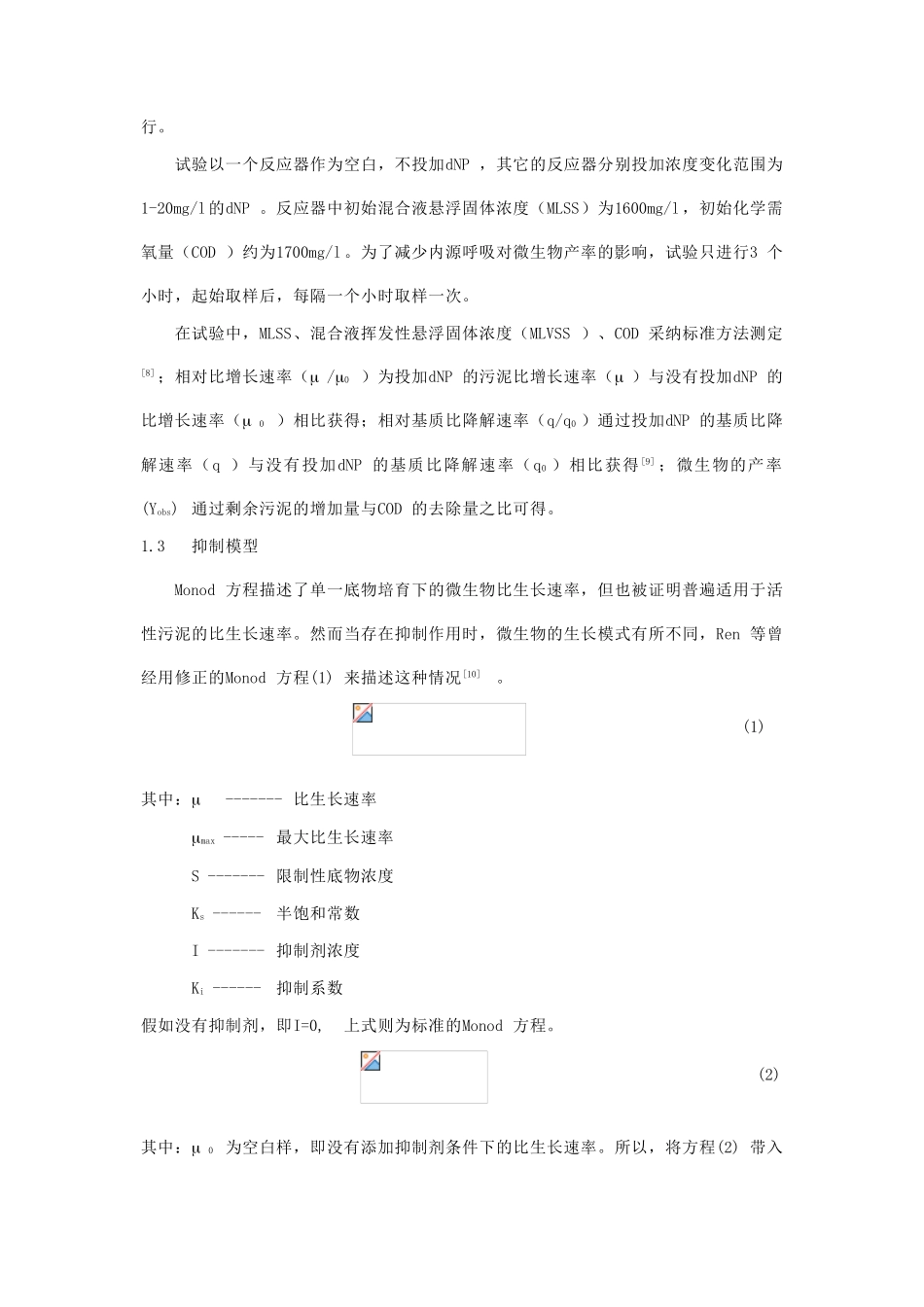2,4- 二 硝 基 酚 对 活 性 污 泥 生 长 动 力 学 的 影 响讨 论摘 要:通过序批式试验讨论了2,4-二硝基酚(dNP) 对活性污泥生长动力学的影响。当2,4-二硝基酚浓度小于10 mg/l 时,污泥产率和相对比生长速率(/0) 明显下降,但相对基质比降解速率(q/q0) 并没有明显降低,抑制系数分析表明,此时1/Ki=0.05,即对活性污泥基本没有毒害;而当投加量大于10 mg/l 时,相对比生长速率和相对基质比降解速率均有明显下降,此时抑制系数1/Ki=0.14,毒害作用增强。关键词:2,4-二硝基酚;生长动力学;产率;抑制性Effect of 2,4-Dinitrophenol on the Growth Kinetics of Activated Sludge Abstract:The effect of 2,4-dinitrophenol(dNP) on the batch growth kinetics of activated sludge was investigated in this study. The yield and the relative specific growth rate(/0) of activated sludge decreased significantly at dNP concentrations lower than 10 mg/l, while the relative specific COD removal rate(q/q0) was not affected severely, and the reciprocal of Ki(inhibition coefficient) was 0.05. When dNP levels were higher than 10 mg/l, the relative specific growth rate and the relative specific COD removal rate decreased distinctly, and the reciprocal of Ki was 0.14. Therefore, dNP had inhibitory effect on the activated sludge at dNP concentrations higher than 10 mg/l.Keywords: Activated sludge; 2,4-Dinitrophenol; Growth kinetics; Inhibition 活性污泥法广泛用于城市废水和生活污水的处理,目前世界上有80% 的城市污水处理厂使用这种方法。但是,这种工艺的最大弊端在于净化污水的同时会产生数量惊人的剩余污泥,例如传统活性污泥法每降解1KgBOD5会产生大约15-100l 的剩余污泥,用于处理或处置剩余污泥的费用约占污水处理总费用的25%-65%[1]。另一方面,采纳填埋或焚烧的方法处置剩余污泥会引起诸多的二次污染问题。因此解决这个问题的根本途径不是在污泥产生后进行后处理,而是在活性污泥处理过程中最大限度的降低污泥产率,即实行各种污泥减量化技术降低污泥产率。有很多方法可以达到这个目的,如:延时曝气[2] 、生物捕食[2] 、高...


